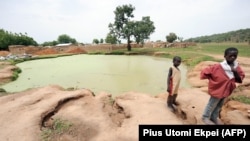October 20th to 26th marks International Lead Poisoning Prevention Week.
Lead poisoning can cause a variety of harmful effects, but the dangers are far more serious to children. When young children are exposed to lead, it “slows their brain development, harms their bodies, and can even kill them,” said USAID Administrator Samantha Power.
Despite the well-known dangers of lead poisoning, countries around the world still struggle with addressing these threats, she said.
“Historically, the yearly global funding for tackling lead poisoning in developing countries has totaled less than $15 million. ... It’s a tiny fraction of what is spent on diseases with similar health burdens.”
This changed last month, when the United States and more than 50 stakeholders launched the Partnership for a Lead-Free Future. The group of governments, philanthropies, and businesses committed more than $150 million with the goal of ending childhood lead poisoning in developing nations by 2040.
U.S. participation in this partnership is part of the “Thrive” strategy - a government-wide effort to address global threats to children, said USAID Assistant Deputy Administrator Dr. Bama Athreya.
“It's so important because we know that 1 in 3 children worldwide have elevated levels of lead in their blood, and that affects their long-term cognitive development. It is a problem we can do something about and the kind of focused, holistic attention that the Thrive strategy places on early childhood development has enabled us to think about problems like lead and come up with these really great practical and partnership focused efforts to end the problems.”
This partnership is crucial to the larger goal of the U.S. Thrive Strategy to protect childhood development at all levels, said Assistant Deputy Administrator Athreya.
“The Thrive strategy is a global strategy. ... And it's focused on advancing protection and care for children who are in adverse or vulnerable situations worldwide. What's really wonderful about this strategy is that it is a whole of U.S. government approach to children in need worldwide.”
“There is wide-spread agreement that we have to protect those children who are most vulnerable in the world,” said Assistant Deputy Administrator Athreya. The United States will continue working with partners to protect children and eliminate threats to childhood development.














